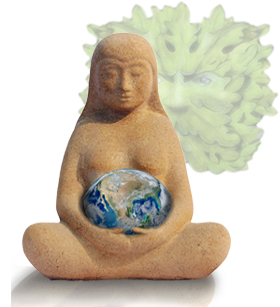danger of space
The moon throws stones at us: Lunar meteorites
The Future and Significance of Lunar ExplorationIn 1982, we made a startling discovery. A meteorite found in Antarctica, ALHA 81005, is from the moon! The rock is a complex regolith breccia, similar to those returned by the Apollo 16 mission in 1972. We have since found over 50 meteorites that, as determined from their unique chemical composition, come from the moon. These rocks were blasted off the lunar surface by impacts, then captured and swept up by Earth as it moves through space. The lunar meteorites come from random places all over the moon and they provide data complementary to the Apollo samples and the global maps of composition obtained by Clementine and Lunar Prospector.
Now we are preparing for humanity’s return to the moon. Over the next couple of years, at least four international robotic missions will orbit the moon, making global maps of unsurpassed quality. We will soft land on the moon, particularly the mysterious polar regions, to map the surface, examine the volatile deposits and characterize the unusual environment there. Ultimately, people will return to the moon. The goals of lunar return this time are not to prove that we can do it (as Apollo did) but to learn how to use the moon to support a new and growing spacefaring capability. On the moon, we will learn the skills and develop the technologies needed to live and work on another world. We will use this knowledge and technology to open the solar system for human exploration.
Space debris is a growing problem with space travel. Space debris can be literally anything, from tiny flecks of paint, a metal bolt right up to a fully-sized defunct satellite. Over 2000 satellites have been launched into space since the first, in 1957. But unlike Sputnik, which returned to Earth when it re-entered the atmosphere after three short months in orbit, some have refused to come home, such as the which is the oldest satellite still orbiting in Earth’s low orbit after its launch in 1958. But these are usually big objects that can be easily spotted, right? Well imagine the mess if two satellites collided! Two big and easy to spot and track objects now turn into thousands of hazardous pieces ranging in size from big to too tiny to track! In Earth’s orbit now there are roughly 21 000 pieces of space trash bigger than 4 inches (10 cm); approximately 500 000 between 1cm and 10cm and millions smaller than 1cm! You may think it doesn’t matter having all these tiny pieces of space debris floating about but you would be very wrong. They could be lethal! These tiny scary pieces of trash are “floating” at roughly 4 miles per second (6.6 km/s) , turning a tiny fleck of paint into the equivalent of a pound coin hurtling at a speed of 60 mph (100 km/h)! Back in 1983 the Space Shuttle Challenger felt the wrath of an angry paint fleck on their window but still managed to return home from this mission with the damage. So imagine the damage it could do to the all-important space suits Sandra Bullock and George Clooney will be floating about in! Could a fleck of paint bring a quick end to Gravity?
CloudSat is an Earth satellite that studies the clouds in ways never before possible. CloudSat's instrument can actually slice through the clouds to see what's inside. It sends out radar signals that bounce off the water in the clouds and return to the CloudSat instrument. The signal that bounces back tells CloudSat how thick the clouds are and how much water they contain. Its data helps scientists understand all the important things to know about clouds.
Knowing how clouds affect Earth's climate is very important. Do clouds trap heat and make Earth's surface warmer? Or do clouds' bright surfaces reflect enough sunlight back into space to make up for the heat they trap? These questions must be answered for scientists to be able to predict how Earth's climate may change. CloudSat flies in a polar orbit (over the North Pole and the South Pole) close together in a certain pattern with four other satellites. This "constellation" of satellites is called the "A-Train."`
This mobile of beautiful, feather-weight clouds is balanced so that any gentle breeze sends them turning and twisting. Some are rain clouds, dropping sparkling showers below.
But it's not just a pretty work of art. The shapes represent certain types of clouds. One is a big, scary cumulonimbus cloud. It is very tall, reaching from the lowest stratus clouds all the way up to the highest cirrus clouds. The cumulonimbus is pouring rain. A real cumulonimbus cloud might be causing lightening and thunder too. Another rain cloud is the nimbostratus. It is low and flat—and heavy with rain.
You can make this cool Cloud Mobile with common materials and supplies—and a little patience to get it balanced just right.

